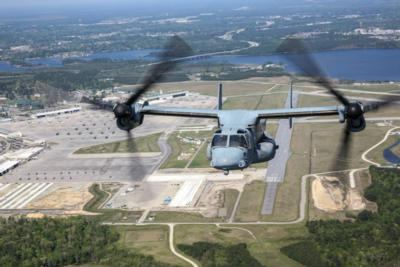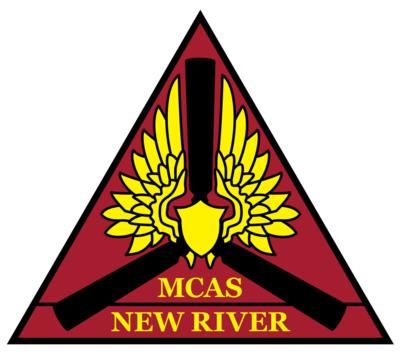Will Enhance Mission Readiness And Increase Safety For Marines
To enhance mission capabilities and ensure the highest safety standards for mission readiness, Marine Corps Air Station New River is in the final stages of completing significant upgrades and renovations to its airfield.

According to Pat Edwards, airfield operations officer and manager on MCAS New River, the base is finishing up an eight-month project that included milling and repaving roughly 4,790 feet of runway and installing 25, 4x4 Light Emitting Diode panels to the hangars as a part of an enhanced Lightning Warning system.
“We have had a lot of technological advances in aircraft, and it is our job to keep pace on the installation level,” said Lt. Col. Roger Holliday, director of installations and environmental on MCAS New River. “It will keep all of the runway and taxiways serviceable so that Marines meet their flight hours and training goals.”
According to Holliday, both aircraft groups and station operations worked seamlessly to keep operations running during the runway refilling and repaving process.
The last renovations to the runway were conducted around 15 years ago, and with the current renovations it is anticipated to last another 10 to 15 years of utilization with no interruptions and little to no maintenance required. This will allow Marines to use the entirety of the air space for training.
“The squadrons played a big role in the success of the project,” Edwards said. “Their patience and willingness to adapt to the situation allowed the contractors to provide work that will add to the value of the airfield for their training.”
According to Holliday, with an energy saving initiative and a budget of roughly $9 million, the base is also updating approximately 1,200 incandescent runway and taxi marker lights with LED replacements, as the life cycle of the LEDs are longer and cost a fraction of what incandescent lights cost, effectively saving energy and money for the Marine Corps.
“When we were in the development of the LED replacement project, we had a shortfall in our ability to quickly warn everyone that there was lightning within five nautical miles of the airfield,” Holliday said. “This is the distance at which everyone is required to evacuate the flight line into the hangars for their safety. We wanted to have an effective way of communicating to Marines and reduce notification time.”

The new Lightning Warning system will provide Marines anywhere on the flight line proper and prompt notification of lightning up to five miles away. When the personnel are notified of lightning within five miles, they will be able to flip a switch that will cause the LED lights to blink and be visible from anywhere on the fight line. The goal of the warning system is to ensure Marines who maintain the aircraft stay safe and can properly shelter in the event of destructive weather.
“We have had a lot of technological advances in aircraft, so we have to keep pace here on the installation level by keeping all of the runway and taxiways serviceable so that Marines meet their flight hours and training goals. Our utilities and information technology has to advance as well to be able to support the new advanced aircraft we are introducing,” said Holliday. "Being able to keep the technology of the air station current allows us to support technologically-advanced aircraft that we have today. It also allows us to look at the horizon to see what is coming tomorrow.”
 ANN's Daily Aero-Term (05.09.24): Hold Procedure
ANN's Daily Aero-Term (05.09.24): Hold Procedure ANN's Daily Aero-Term (05.06.24): Altitude Readout
ANN's Daily Aero-Term (05.06.24): Altitude Readout ANN's Daily Aero-Linx (05.06.24)
ANN's Daily Aero-Linx (05.06.24) Airborne-NextGen 05.07.24: AI-Piloted F-16, AgEagle, 1st 2 WorldView Sats
Airborne-NextGen 05.07.24: AI-Piloted F-16, AgEagle, 1st 2 WorldView Sats Aero-News: Quote of the Day (05.07.24)
Aero-News: Quote of the Day (05.07.24)




